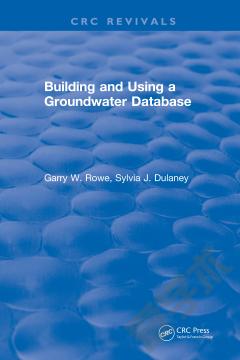Building and Using a Groundwater Database
PREFACE. GETTING STARTED: WHY AND WHAT SIZE. Groundwater Databases & Groundwater Protection. A Solution. The Bureaucracy. Getting Started at a Local Level. DATABASE BACKBONE: INFORMATION FROM THE WELL LOG. The Well Construction Record. Well Construction Data: Minimum Elements. Data Quality Decided at the Local Level. METHODS: MECHANICS OF WELL LOG MAPPING. Locating the Well. Mapping Systems. The Mapping Process. TOOLS: HARDWARE, SOFTWARE, EXPERIENCE. Rules of Thumb. A Minimal System. An Ideal System. DATA ENTRY: ELECTRONIC FILES. General Attributes of Electronic Databases. Selecting the Best Database Manager. Designing Your Database. Special Features of a Groundwater Database. An Example Well Construction Database. The Team Approach to Data Entry. GEOLOGY OF THE DATABASE UNIT: WHAT'S DOWN THERE. The Cross-Section. An Example. The Static Water Level Contour Map. Groundwater Models. An Example Model: Aquipro. Summary of Tools for Studying Geology of the Database. THE WATER CHEMIS TRY DATABASE: MEASURING WATER QUALITY. Selecting the Sites for Sampling. Review of the Data. ENTRY OF CHEMISTRY RESULTS: ELECTRONIC FILES. Common Issues in Groundwater Chemistry Databases. Groundwater Chemistry Minimum Data Elements. ANALYSIS OF DATA: HOW TO INTERPRET THE RESULTS. Profiling the Water Chemistry. Statistics. Graphic Profiles. Geographic Distribution. MANAGEMENT OF THE DATABASE: ELECTRONIC LIBRARIES. IMPACT: PRACTICAL USES. c. 184 pp., 6-1/8 x 9-1/4, 1991, ISBN 0-87371-404-0.
{{comment.content}}








 京公网安备 11010802027623号
京公网安备 11010802027623号